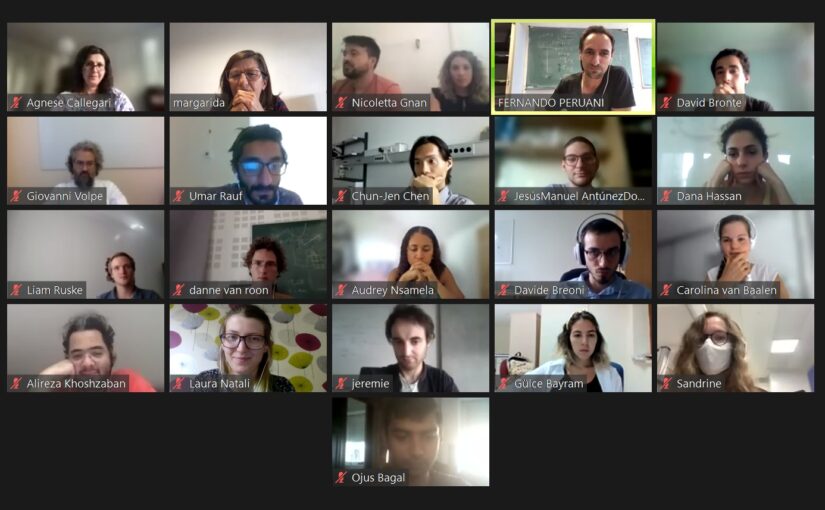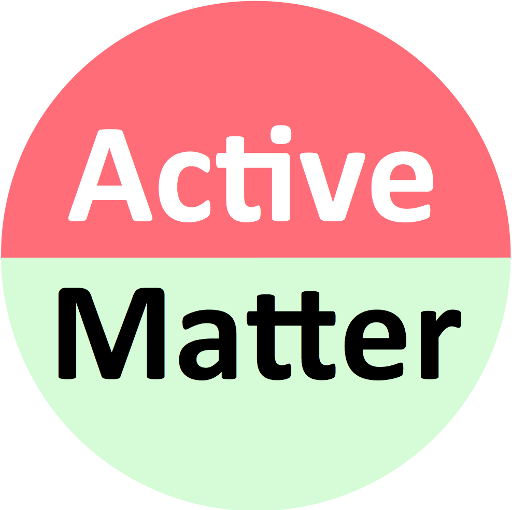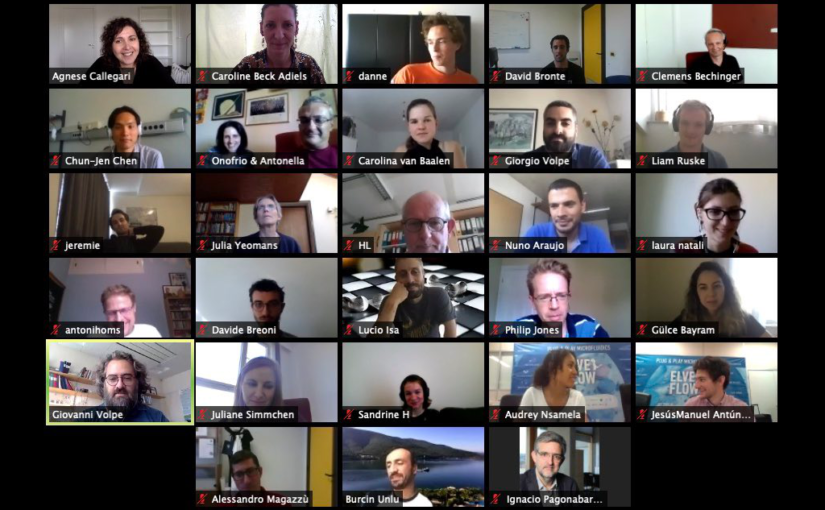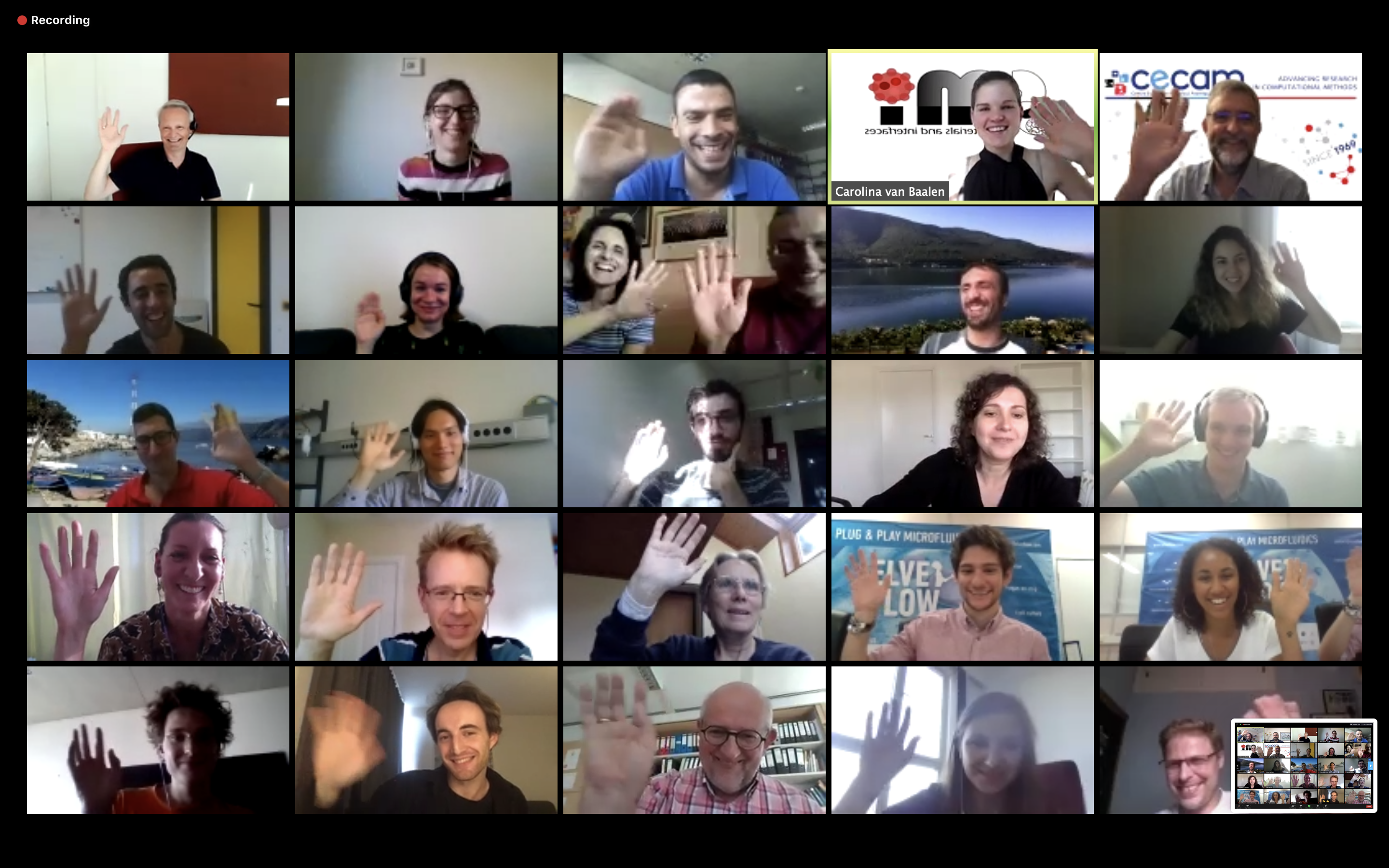
Tag: Carolina van Baalen
David visits the Soft Materials and Interfaces lab at ETH Zurich

Round Table on the Universality of Active Matter: from Biology to Man-made Models
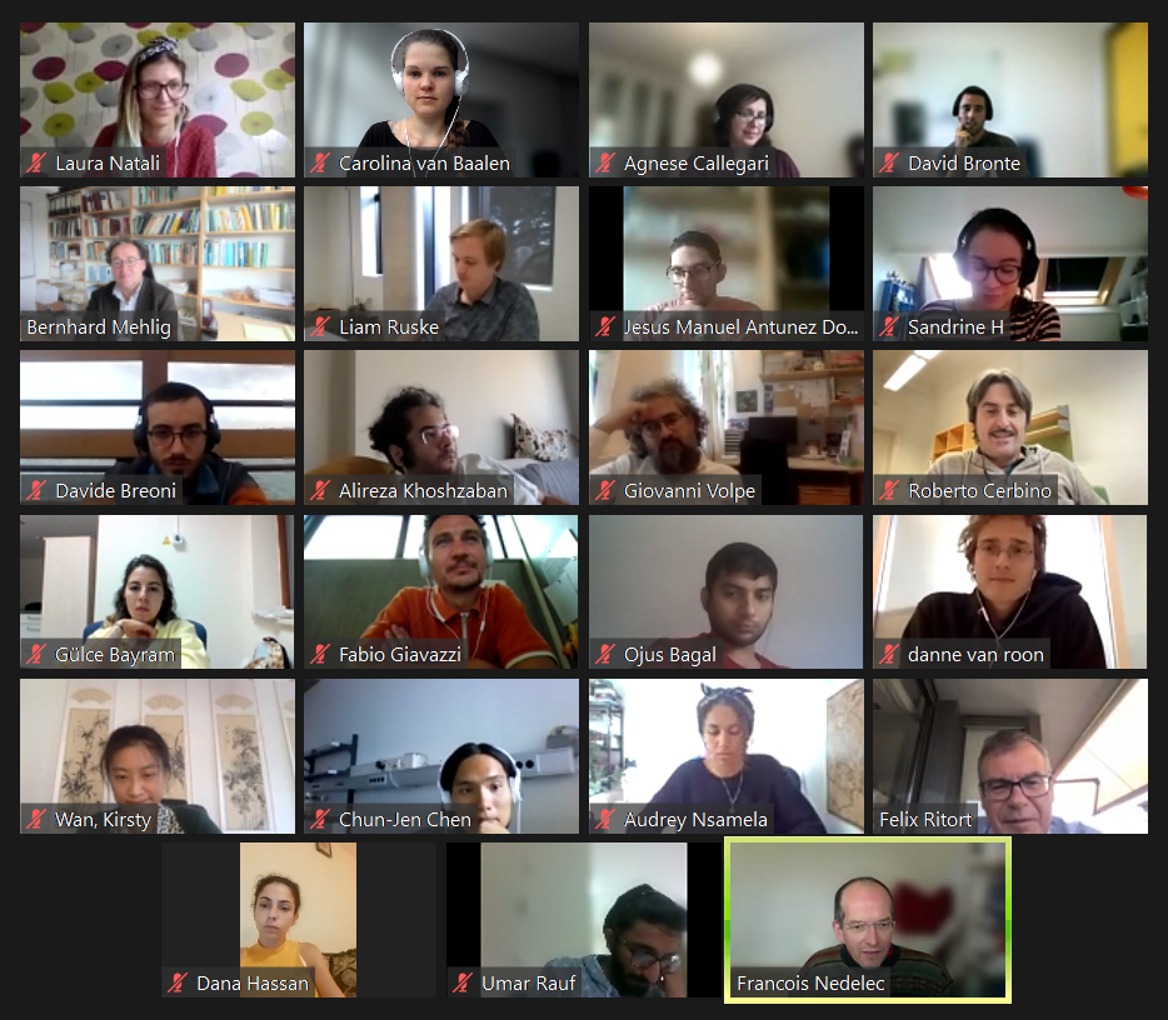
On the 20th of September, the last round table of the Initial Training on Theoretical Methods took place. The discussion was let by the ESRs David, Sandrine, Liam, Carolina, Danne, and Laura. We were excited by the presence of an inspiring panel composed of Felix Ritort, Roberto Cerbino, Kirsty Wan, Fabio Giavazzi, Bernhard Mehlig, and François Nédélec.
The quote “If a system is in equilibrium, it’s probably death” ignited a lively and dynamic discussion around the topic of this final round table: “The universality of active matter: From biology to man-made models.”
Several topics were discussed ranging from active matter length scales and entropy production, to the equipartition theorem and universality. The session left us pondering about the definition of active matter: From single cells to the galaxy, where does the definition of active matter end? Our panelists conclude that it all depend on the question we ask ourselves. The round table was closed with a highlight of the most interesting avenues and opportunities in active matter, including the merge information and activity, realization of in vivo systems, as well as the manipulation of soft matter systems. Some inspiring words from one of the panelists let us realize: “We are the future of active matter.”
Round Table Discussion on Theoretical Aspects of Collective Behaviour

Today the second round table of the Initial Training on Theoretical Methods took place, entitled “Theoretical aspects of collective behavior”. The round table was hosted by ESRs David, Jesus, Ojus, Carolina, Alireza, Dana, and Umar. The inspiring group of speakers included Margarida Telo da Gama, Fernando Peruani, Nicoletta Gnan, and Claudio Maggi.
Many matters were discussed, ranging from the limits of collective behavior and the role of communication in emergence, to the compatibility between experiments and theory of collective behavior. Examples can be found in both natural and artificial environments, even combinations with varying degrees of active motion. This adds to the challenge of defining valuable, even if not accurate, models. At the core, collective behavior highlights how the system can be much more than just the sum of individual entities.
The Active Matter network has a new logo !

 New ActiveMatter logos: color and BW version. (Image by ActiveMatter ESRs)
New ActiveMatter logos: color and BW version. (Image by ActiveMatter ESRs)
Round Table Discussion on: Optics, Spectroscopy, Micro and Nanofabrication, and Nanotribology
On Tuesday 23 March the fourth round table of the initial training on experimental methods for active matter took place. The topic of the round table was “Optics, Spectroscopy, Micro and Nanofabrication, and Nanotribology”, and the discussion was led by Ayten Gülce Bayram , David Bronte Ciriza, Dana Hassan, Carolina van Baalen and Jesús Manuel Antúnez Domínguez.
The panelists included Maria Grazia Donato, Pietro Gucciardi, Antonino Foti, Shivaprakash Ramakrishna, and Felix Holzner.
The importance of the topic of the round table to the field of active matter was motivated by the panelists from different perspectives. The discussion ranged from the main differences and challenges that come along with working on the micro- and nanoscale, to how changing the dimensions of your system allows one to change the properties of a system’s response, as well as the challenges involved in bringing a product idea to the market. The main conclusion was that the nanoscale is exciting, but the smaller you get, the greater the challenge.
Round Table Discussion on: Phoretic Propulsion Mechanism
During the second day of the experimental training, we organised the first round table discussion. The session was chaired by six of the students attending the training: Carolina van Baalen, Danne van Roon, Gülce Bayram, Harshith Bachimanchi, Laura Natali and Sandrine Heijnen.
The topic of the round table was phoretic propulsion mechanisms and we had four panelists – Juliane Simmchen, Frank Cichos, Ivo Buttinoni and Felix Ginot – and a guest speaker, Antoni Homs Corbera. After a brief introduction of the panelists, we had a chance to ask all the questions we collected from the other participants.
The discussion started with the definition of the term “phoresis” and continued with the simulation frameworks for phoretic colloids. It included a brief discussion of the complexity involved in these processes and the typical length scales at which interfacial effects are relevant.
The conclusion was “a common joke at conferences is that the phoresis starts when coffee is about to be served”. The real conclusion was that phoretic interaction needs very large gradients on the macroscopic scale and is hidden by diffusion on a very small scale.
All participants had the possibility to jump in and add upcoming questions. We ended the round table by discussing the possible applications of phoretic colloids, highlighting the environmental aspects like microplastics’ filtration in water.
We thank all the guests and participants for making it a successful discussion moment.
Carolina van Baalen presents her PhD project at the ActiveMatter online meeting, 10 September 2020
On September the 10th the first meeting between all ESRs and PIs in our network took place. During this meeting Carolina van Baalen, ESR from ETH Zurich, presented herself and her project by means of a short video. Curious what her work looks like as a first year doctoral student in Active Matter? Have a look at her video, in which she will give you a glimpse of her research on active colloids at liquid interfaces!
ActiveMatter PIs+ESRs Online Meeting on 10 September 2020
The ActiveMatter PI+ESRs meeting took place on 10 September 2020. Because of the current travel restrictions and regulations imposed to hinder the spread of the CoViD-19 epidemics, the meeting was held online.
The aim of the meeting was to give an update to all the members on the progress of the ActiveMatter network.
Currently 12 of the 15 Early Stage Researchers (ESRs) have already been recruited and could started their project. During the meeting the ESRs had the opportunity to introduce themselves to the rest of the network and to present their research project.
The presentations of the ESRs have been uploaded on the Youtube channel of the ActiveMatter network and are available online.
Links to the individual presentations:
Liam Ruske, UOXF
Carolina van Baalen, ETH
Audrey Nsamela, ELVESYS
Danne van Roon, FC.ID
Chun-Jen Chen, UKONS
Sandrine Heijnen, UCL
Jesús Manuel Antúnez Dominguez, ELVESYS
David Bronte Ciriza, CNR
Laura Natali, UGOT
Ayten Gülce Bayram, UBIL
Davide Breoni, UDUS
Jérémie Mar Bertrand, EPFL
Pictures
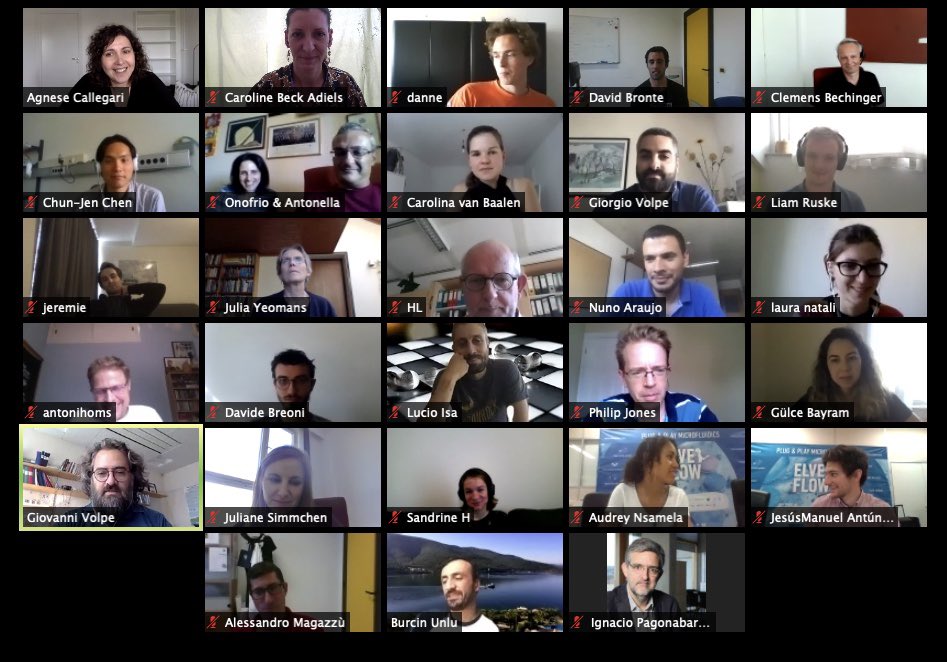 (Screenshot by Caroline Beck Adiels)
(Screenshot by Caroline Beck Adiels)
Carolina van Baalen joins the ActiveMatter ITN
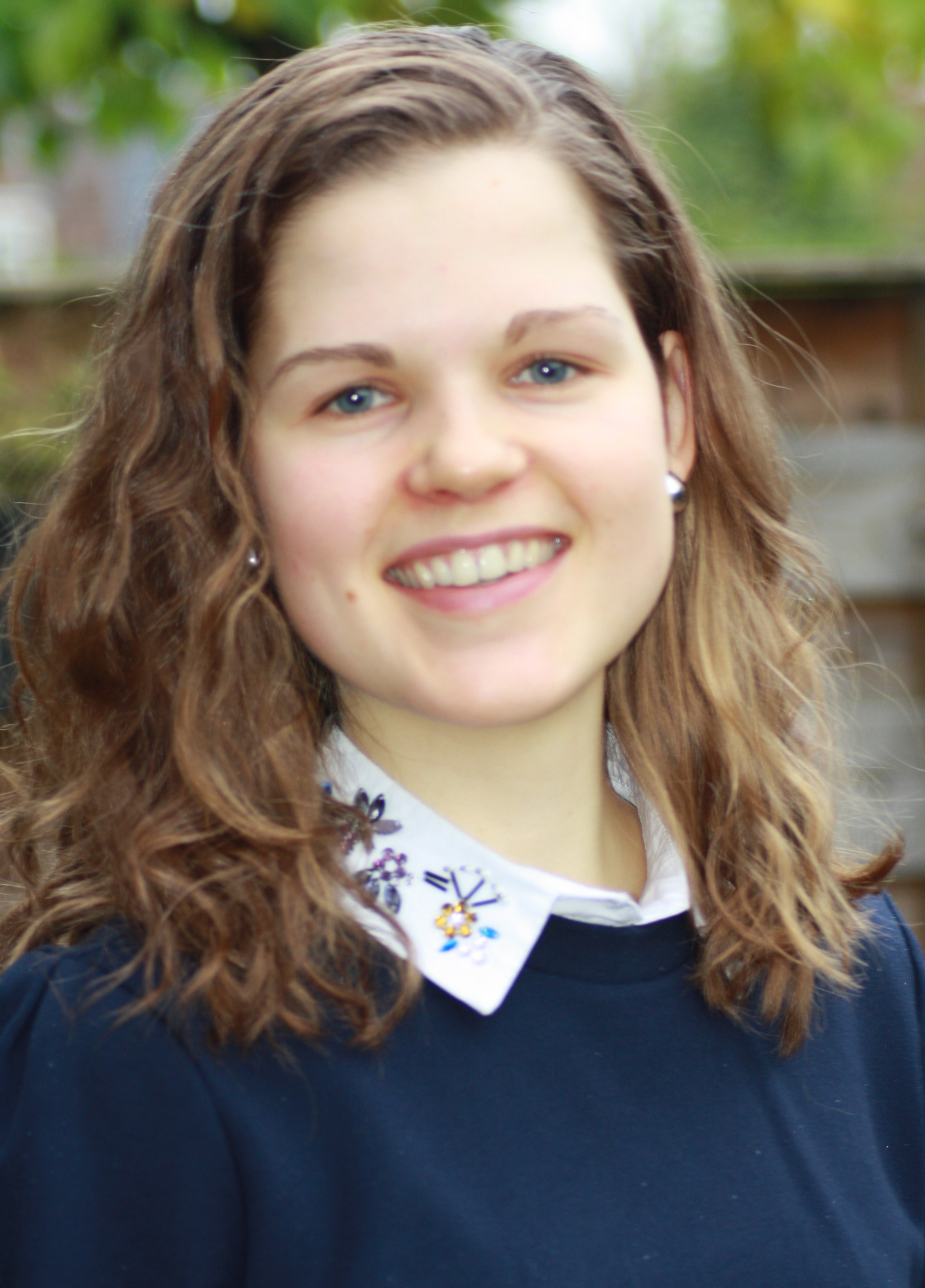 Carolina van Baalen started her PhD program in Physics at ETH Zurich as one of the Early Stage Researchers (ESRs) of the ActiveMatter ITN.
Carolina van Baalen started her PhD program in Physics at ETH Zurich as one of the Early Stage Researchers (ESRs) of the ActiveMatter ITN.
Her work focuses on active colloids confined at complex liquid-liquid interfaces.
She will conduct her research under the supervision of Prof. Lucio Isa.




